Estimated Read Time: 39 minutes
Canada at a Crossroads
Canada is at a crossroads.
Trade wars. Shooting wars. Climate change. Biodiversity loss. Division and disruption and democratic decline.
The world and its problems are becoming more complicated by the day and the corresponding challenges facing our nation aren’t getting any easier.
“I think we’re in an era of polycrisis or perpetual crisis.” – Heather Scoffield | Former Journalist and Economics Expert
“Worldwide, we’re in big trouble.” – Peter Biro | Lawyer and Democracy Expert
“The world is not necessarily a pretty place. We could hope that it will be one day, but getting there is rough.” – Heather Scoffield | Former Journalist and Economics Expert
“There is no question. The world’s at an inflection point right now.” – Randall Howard | Angel Investor and Entrepreneur
“I believe we’re at a really important crossroads.” – Harvey Locke | Global Biodiversity Advisor
“I think we’re at the crossroads. I think one way to go is for community and the other is for self.” – Pete Smith | Artist and Rural Advocate
How do we safeguard and grow our economy – how do we create jobs and bring down the cost of living – in an era of mass change?
How do we do that while also navigating the dual threats of climate change and biodiversity loss? Environmental issues, for sure, but also very much economic and cultural challenges as well.
Each of these issues, if not complex enough, must also account for growing divides in our society – cultural divides, language divides, geographic divides, economic divides, political divides. And they must also must be addressed in a more dangerous, less democratic world.
Maybe you think: These aren’t hard challenges – the solutions are obvious.
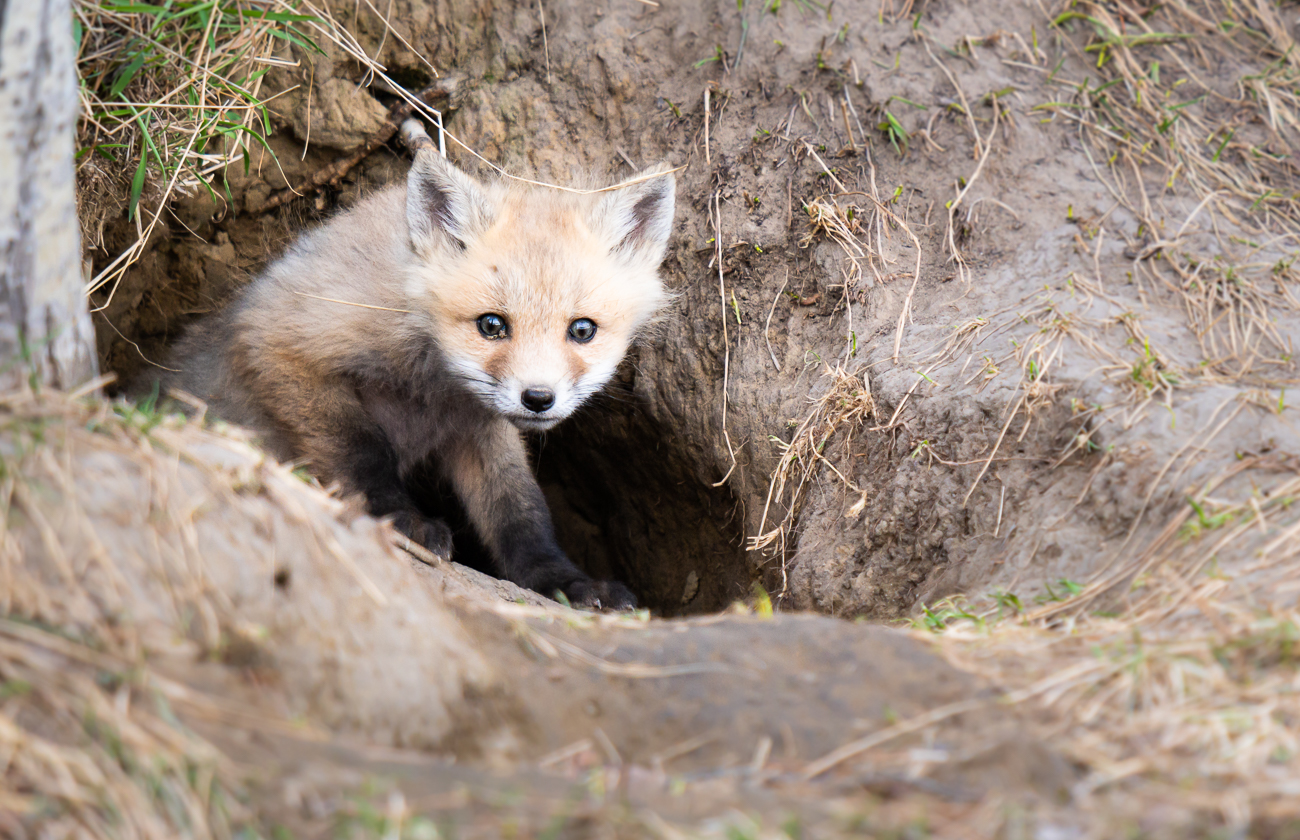 Yet nothing is as easy as we assume it should be, in part because even when we think problems are black and white – good versus evil – they rarely are. Almost every issue is maddeningly complex, made all the more difficult when emotions like uncertainty, anger, hopelessness and fear are added to the mix.
Yet nothing is as easy as we assume it should be, in part because even when we think problems are black and white – good versus evil – they rarely are. Almost every issue is maddeningly complex, made all the more difficult when emotions like uncertainty, anger, hopelessness and fear are added to the mix.
Which isn’t to say we’re without options. There are ideas. There are always ideas. But are they complete ideas? Are our best and brightest focused not only on the crises of today, but also those of tomorrow? Are our decision makers balancing the needs of today with those of your tomorrow?
These are the questions.
And speaking of questions, maybe you have one about now.
Like, is Canada really at a crossroads? Are our problems that bad? Do we really need to worry about every one of these issues right now and all at once?
So, here’s the thing…
“This may be a real pivot point in the future of the country.” – Monte Solberg | Former Conservative Cabinet Minister
“We cannot afford to be smug in Canada.” – Peter Biro | Lawyer and Democracy Expert
“One thing after another after another, that’s hitting us from the outside, sometimes from the inside of our country – but usually from the from the outside – by a world that is in turmoil. It’s natural disasters, and it’s the advent of artificial intelligence, the rise of authoritarianism and so forth. And that is, it’s all very disruptive, and I don’t think we have a choice but to look at it all at the same time.” – Heather Scoffield | Former Journalist and Economics Expert
“But it’s also a time – a chance – for Canada to really step back and have another look at how we do things. And that certainly includes our approach to nature and the environment.” – Monte Solberg | Former Conservative
“And I think that right now, Canada is in a really interesting opportunity to talk about community and to be a community.” – Pete Smith | Artist and Rural Advocate
“It’s just hard to figure out how to move forward.” – Ilona Dougherty | Social Innovator and Generations Expert
“The only way to address a wicked problem is to get people to work together.” – Monte Solberg | Former Conservative
“It’s not easy. It requires a lot of work and a lot of collaboration. But I do think that we have the fibre as a country to be able to do that.” – Heather Scoffield | Former Journalist and Economics Expert
“It’s up to us. It is not up to a government. If we are not participating – if we do not assume responsibilities – I don’t care if you come from a town three or a city of 4 million. l think that we have to figure out how we can work together. Now, especially. – Pete Smith | Artist and Rural Advocate
Canada, for much of confederation, has mostly decided to stand against something and, so often, that something is America.
We’ve become smug, cocky even. We’ve been content to skate by, rather than skate ahead. But that isn’t going to cut it anymore.
Whether we’re talking the health of our democracy, our economy, or our environment, our advantages have slowly eroded. And now? The problems are mounting. They’re becoming more complex. They’re becoming more interconnected.
 They demand a decision. They require courage.
They demand a decision. They require courage.
As a country, we must stand for something. We must uncover a set of ideals that can bring us together and move us forward, now more than ever.
This challenge? It’s going to require every Canadian of every age to step up and use their own unique skills to look at each problem from a new perspective.
It’s going to require each of us to step outside of our comfort zones and overcome our natural biases in order to really understand our entire system – our entire ecosystem.
After all, only by really listening and learning can we create a better tomorrow. And tomorrow? Very soon it will be your today.
That’s why this class isn’t just theory; it’s not abstract.
This class is the foundation for understanding real issues in the real world.
It’s designed to help you take what you’re learning and apply it to the challenges we face as a country and a world.
And maybe you think: I’m in school! I can’t do this! But here’s where you need to think again.
“The younger generation, I think, has a finely tuned sense of the dangers that the world is in, but they also have their hands on the potential solutions.” – Heather Scoffield | Former Journalist and Economics Expert
“It’s not an expectation that people will do the right thing or that good things will happen. It’s in the knowledge that if they choose to, they can.” – Peter Biro | Lawyer and Democracy Expert
“Our country is only as great as the people that step up to help make it great.” – Erin O’Toole | Former Leader of the Conservative Party
“One of the most powerful things that young people can do is talk about ideas. And I think young people don’t realize how powerful their voices are. They have way more power than they think they do. And part of participating well under a democracy is to shape, not only to be shaped and you can shape, and that’s your power.” – Harvey Locke | Global Biodiversity Advisor
“Our most influential and impactful ideas will come from young people today who are growing up in this world.” – Dr. Aleem Bharwani | Doctor and Professor
Exactly, or put another way:
“Young people are always made for the moment that they are born into.”
Ilona Dougherty is a social innovator and Canada’s leading researcher on, well, you. And as she explains:
“Young people’s brains are literally wired to be bold problem solvers and to come up with solutions to complex problems. Their brains are wired to do that. So young people today, from about 15 to 25 are at the height of their creativity or at the height of our desire to experiment and try new things. We are more observant than when we’re either younger or older. There’s all these incredible abilities that we have until about 24.”
So, if you have the creativity – and you do – and if the challenges we face today will impact your future – and they will – why not help us chart a newer, better path forward. For you. For your family and friends. For our country. For our world.
Right, Ilona?
“Young people are more able to deal with complexity and to figure out problems in a way that that as we get older, we just aren’t able to do as much.”
Exactly! You have the ability to see the forest for the trees – you have the ability to understand what so many of us have looked past.
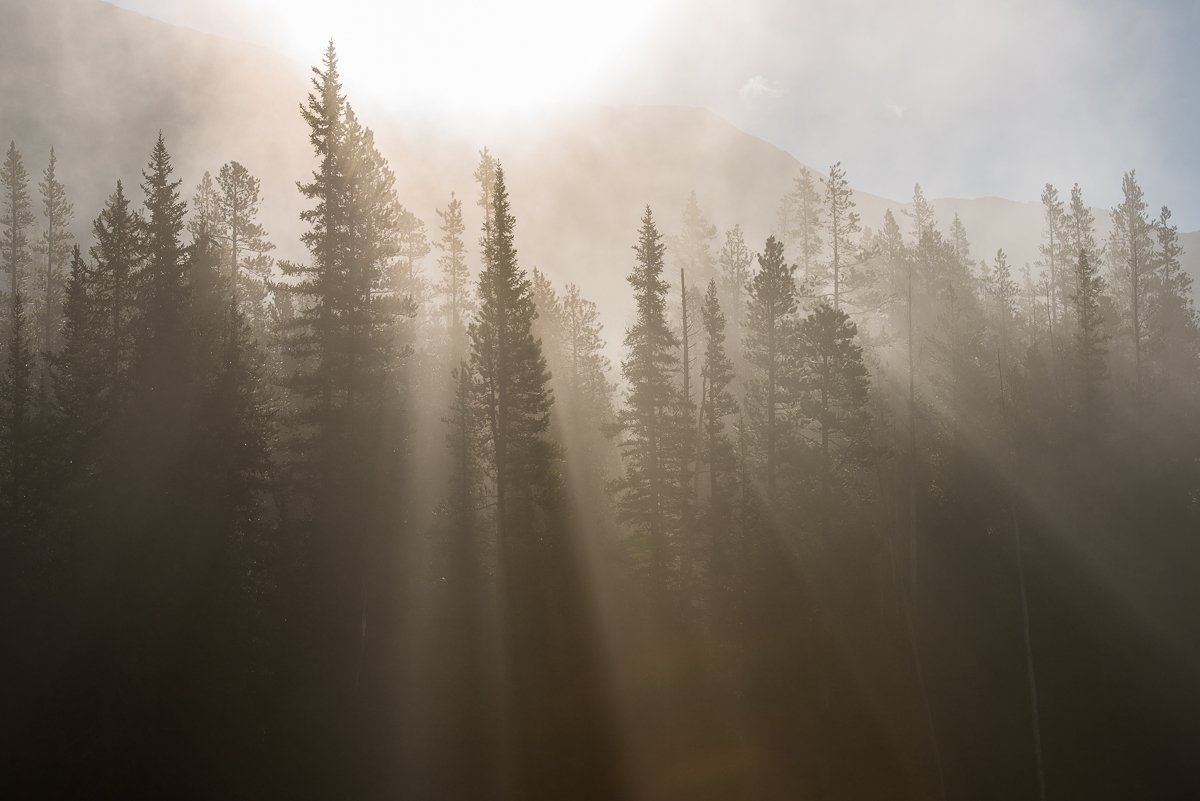
Like a marten.
A what?
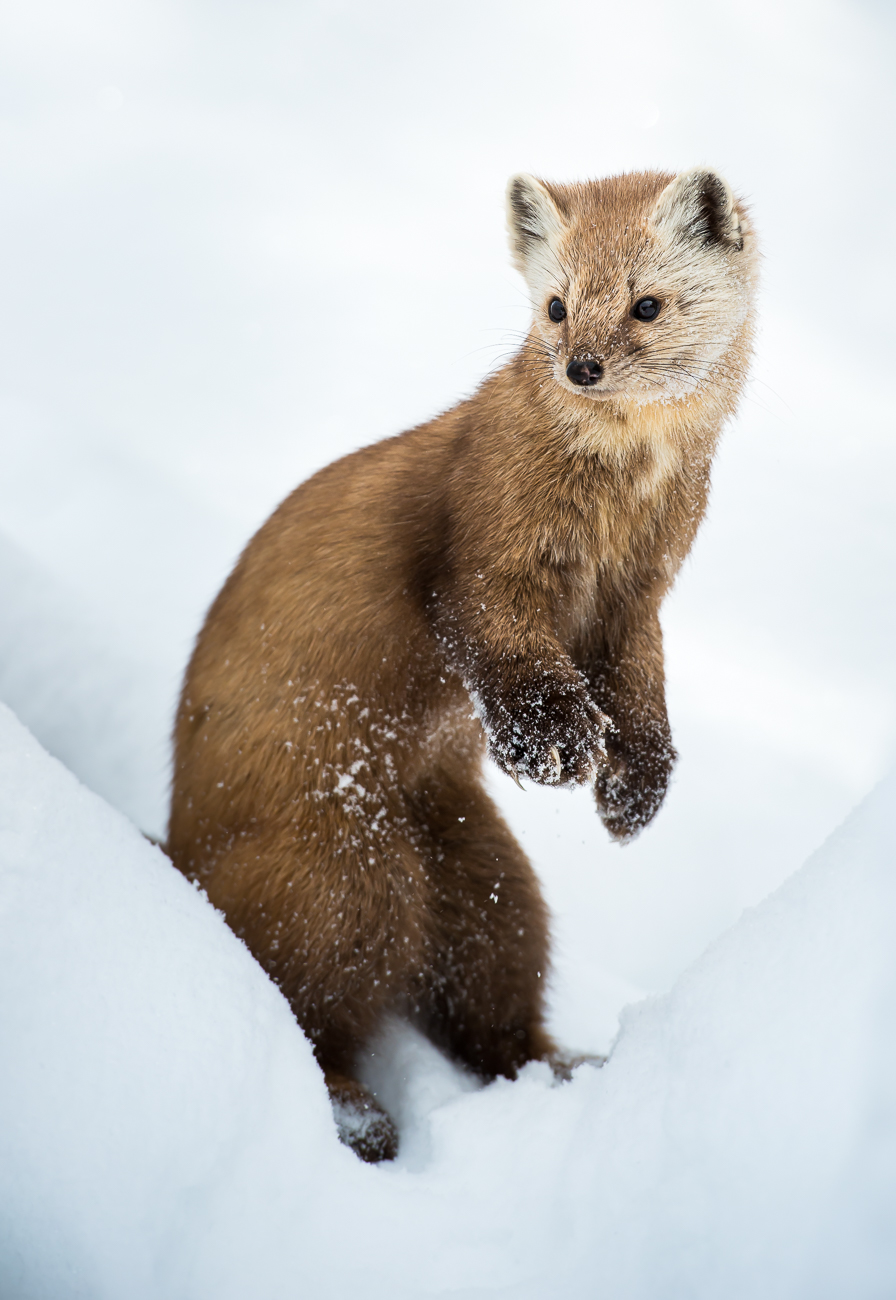 A marten! A medium sized, ridiculously cute member of the weasel family. And like all members of the mustelid or weasel family, it’s fast, it’s smart, and it’s more than capable of surviving in this unforgiving wilderness.
A marten! A medium sized, ridiculously cute member of the weasel family. And like all members of the mustelid or weasel family, it’s fast, it’s smart, and it’s more than capable of surviving in this unforgiving wilderness.
And don’t forget, this wilderness? Your classroom? It’s home to much bigger animals – animals that should give the marten a run for its money. We’re talking wolves and grizzlies and cougars and lynx and wolverines…and even moose and elk because, while their teeth aren’t that big, these things? On a big body like this one? They can do a lot of damage.
Especially when you’re about the size of a skateboard.
Despite its small stature, the marten has carved out a successful life in this vast, harsh world. Its territory is massive relative to its size, and it is one of the seven fiercest predators to call this place home. That, in turn, has allowed the marten to create an ecological niche – a kind of economy – that has allowed it to thrive in this great white northern environment.
Sound a bit like Canada? It should. We’re small in stature, but rich in geography. We’re a G7 nation that has used ingenuity to build a prosperous society on a land that many might interpret as cold and barren.
“We certainly are a nation of innovators. Think about the history of the country. I mean, we had indigenous people who were very, very self-reliant, and then we had a whole pioneer culture, and we’ve had wave after wave of immigration come into the country. So, it means we’re tough. We are tough!” – Heather Scoffield | Former Journalist and Economics Expert
This is what has allowed us to find our footing as a country, and grow. But, if we’re being honest, what’s allowed us to excel? A bit of good fortune.
“We lived on the doorstep of the world’s biggest market. So why would you load your widgets onto a ship in Halifax or in in Vancouver when you can pop it on a truck or a train and sell it to the biggest market in the world? – Erin O’Toole | Former Leader of the Conservative Party
Not only have we benefited hugely from our proximity to the US, we’ve also decided to deeply connect our nations, building our cities close to the border and linking our infrastructure with Americas.
“We’re a large country with a population kind of in a ribbon around the US border. So, a lot of our infrastructure, whether it’s pipelines, whether it’s electricity, whether it’s other things, tends to be north south.” – Randall Howard | Angel Investor and Entrepreneur
The benefit?
“After World War II, and particularly after the fall of the Berlin Wall, the world has enjoyed the most tremendous period of wealth creation, poverty reduction, general stability that we’ve seen in global history.” – Erin O’Toole | Former Leader of the Conservative Party
The marten, at least in this park, has benefited from a bit of good luck too.
You know the saying one person’s garbage is another person’s treasure?
Yeah, the marten takes this concept to the next level.
While the marten can hunt, hunting requires calories. And calories? It’s always better to acquire them than to spend them. And guess who loves to toss away a few free calories: We do!
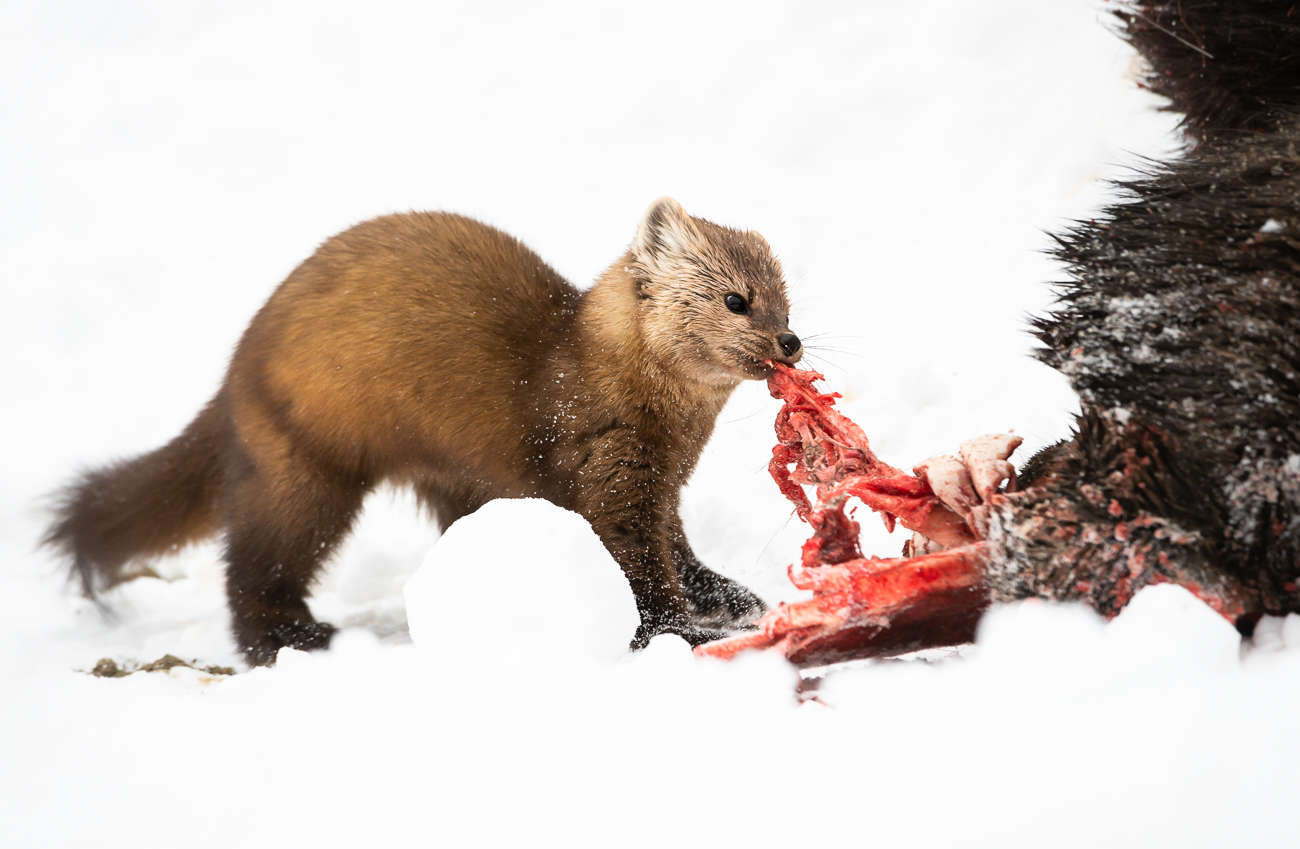 Whether it’s a moose hit by a car or one too many hamburgers cooked for the old picnic, we’re constantly throwing away food – throwing away our scraps. The marten? It’s not one to pass up a free meal, given its size.
Whether it’s a moose hit by a car or one too many hamburgers cooked for the old picnic, we’re constantly throwing away food – throwing away our scraps. The marten? It’s not one to pass up a free meal, given its size.
And while the human-marten relationship isn’t perfect by any stretch, from the marten’s perspective, it sure beats time-consuming, small-time squirrel chasing, or having to forge give-and-take security relationships with other species. After all, humans do much of the hard work for the marten for free!
So, yes, it’s true. The marten here? They’ve fully embraced their proximity to humans – and a few bad habits along the way.
Which, again, sounds a bit like Canada.
“Canada has become a laggard on defense and security and NATO. We became what’s termed a ‘free rider’. We rode on the fact that, hey, the US are our buddies. They have the world’s most powerful military by a factor of 10. We don’t have to meet our commitments to NATO. We don’t have to spend 2% of our GDP on defense. We don’t have to maybe buy that new submarine. We’ll buy an old used one and patch it together with duct tape.” – Erin O’Toole | Former Leader of the Conservative Party
But we’ve not just been complacent about our security. Like the marten, we’ve become complacent on a lot of fronts.
“We are in a very tricky situation right now.”
But fine isn’t sufficient when it comes to our economy. To understand why, we thought we’d start with the basics, turning to one of Canada’s most trusted voices on the economy and economic issues: Heather Scoffield.
“The economy is kind of a vague term. You can certainly throw an awful lot of things in that bucket, but I’d say for me, it means having a job, being able to afford the things that you want, being able to put your shoulders to the wheel and do hard work and be rewarded for it, and paying taxes so that you have the things that society wants. So, we’re talking about quality of life here.”
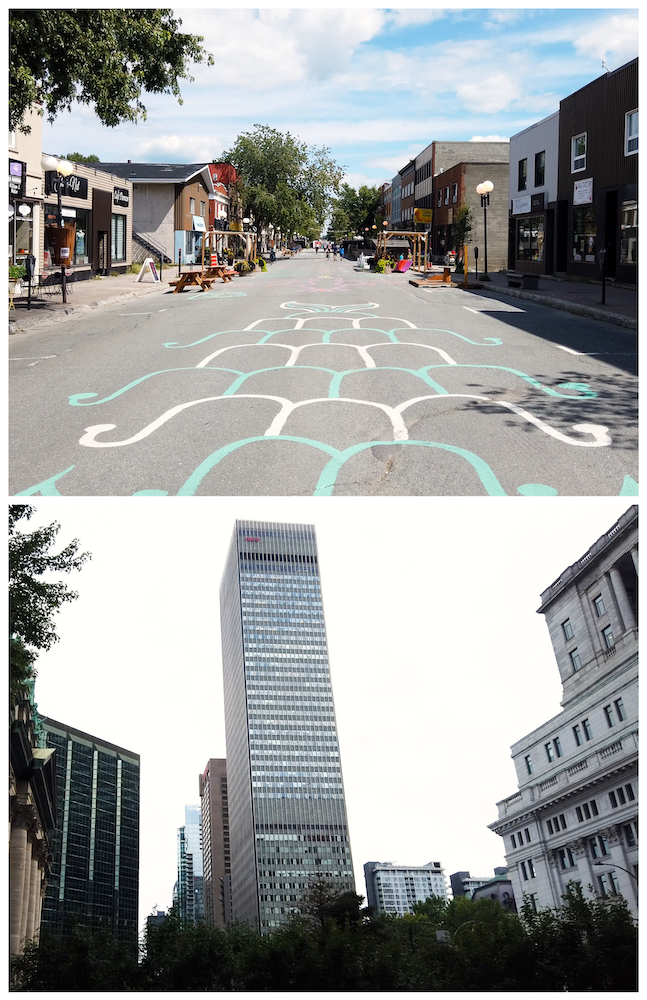 And for our economy to be functioning? For our nation to be prosperous? We need to grow.
And for our economy to be functioning? For our nation to be prosperous? We need to grow.
“It’s not just a static thing. The economy is living and breathing all the time, and you’d hope that it’s getting bigger, because some of the problems that we’re concerned about as a society – the environment, poverty, everybody having a nice place to live – all of those problems are solvable, but they’re even easier to solve if you’ve got an economy that’s growing at the same time. When your economy stops growing, that means you’ve got to make some really, really tough choices.”
And guess what?
“Our economy is growing, but barely.”
How has this happened?
“It’s been, I’d say, probably 20 years of low, low productivity here. That’s what we’re talking about.”
Productivity. Oh god. I know what you’re thinking: so boring. But it’s not! To understand why Canada is in trouble, we really need to understand this issue.
“It’s a word that’s hard to digest, but what it really means is that while other countries around the world, especially United States, where they were taking leaps and bounds ahead in terms of applying technology and getting better at making more with less, we just kind of held steady.”
Why has this problem been allowed to fester? Heather says:
“Some of it comes down to our aversion to risk. We see that at all levels. With risk you there’s high reward, but you could also lose, and I don’t think that that willingness to fail is not necessarily something that we’ve embraced as a country.”
Celebrated angel investor and technology entrepreneur Randall Howard agrees.
 “There’s a saying sometimes that in Canada, we have a culture that’s risk averse. Sometimes it’s called ‘go for bronze’. I think a lot of that productivity issue is a sense that maybe we don’t have to try as hard. Maybe life is too comfortable.”
“There’s a saying sometimes that in Canada, we have a culture that’s risk averse. Sometimes it’s called ‘go for bronze’. I think a lot of that productivity issue is a sense that maybe we don’t have to try as hard. Maybe life is too comfortable.”
If life is going well, there’s really a good reason to rock the garbage can, right? Well, when any species becomes habituated to something easy, something unnatural, problems can begin. Right Heather?
“We’ve developed a kind of a complacency, because life is pretty good, or it has been. But when we’re hitting a trouble spot, trouble patch, like we are right now, then it means we don’t have a heck of a lot to fall back on.”
That’s the issue, as conservative strategist and demographics expert Hamish Marshall explains, issues like productivity seem like dry economics until it starts impacting our daily lives.
“Most surveys show that something like 50% of Canadians are within $200 of not being able to pay a big bill or get through the month. That creates a massive level of anxiety.”
Here’s the funny thing about humans: we often don’t understand societal problems until they’re full-blown tire fires. The economy? It didn’t become a crisis overnight, but we failed to heed the warnings of economic nerds.
Canada, as you now understand, has had economic issues for years. Then COVID hit. That cost money. Big money. It also changed how we work and what we buy.
COVID, labor shifts, and changing purchasing habits all impacted supply chains – the systems that deliver the goods we want. So too did natural disasters.
The consequence? Inflation. The price of food went up. Affordable housing – a long-standing problem in Canada – became even harder to find.
What was considered a temporary problem became worse and worse as fewer and fewer people were able to fill the jobs to meet the demand that was crippling the supply chains. Temporary workers were brought in to ease the problem, but these workers also needed housing and that just made the housing problem more acute.
Meanwhile, because of productivity issues, no one wanted to invest in Canada, so wages weren’t keeping pace with inflation. And because inflation kept steady? Suddenly, Canada had – has – a cost-of-living crisis on its hands.
But, again, it wasn’t sudden. It just seemed sudden because we allowed problem after problem to compound until a lot of bad luck finally turned a problem into a very real, very tangible crisis.
“Economically, it’s harder, it’s harder to rent an apartment, move out of your house, your parents’ house, like all of this stuff, is way harder than it used to be.” – Ilona Dougherty | Youth Expert
If this all sounds bad? Guess what? It might get a whole lot worse.
You see, while Canada was going for bronze, it was also putting most of its economic eggs in one neighbouring nation-state basket.
Like the marten, the strategy of taking advantage of geography and proximity to a massive economic market makes sense. The forest? Sure, it offers a diversity of natural prey that, in times of food scarcity, will give the marten more options for survival. But it also offers risk. And risk? It can be dangerous.
But it’s also risky to put all of your eggs in one basket. Because if something changes? If that sweet supply of garbage gets cut off or suddenly becomes dangerous in its own right? Well, that will pose an even bigger risk than for the marten.
And here’s the thing about change: It’s constant. Nothing good lasts forever.
The same holds true for Canada. The good old days of solely relying on America?
“We’re hitting some rough times with the United States putting up tariffs against us, putting them up, taking them down, putting them up, taking them down.” – Heather Scoffield | Former Journalist and Economics Expert
“As a business person, you cannot respond to chaos in the constantly changing environment.” Randall Howard | Angel Investor and Entrepreneur
US President Donald Trump’s on again-off again trade war with Canada and so many nations around the world has thrown the global economy into a state of turmoil.
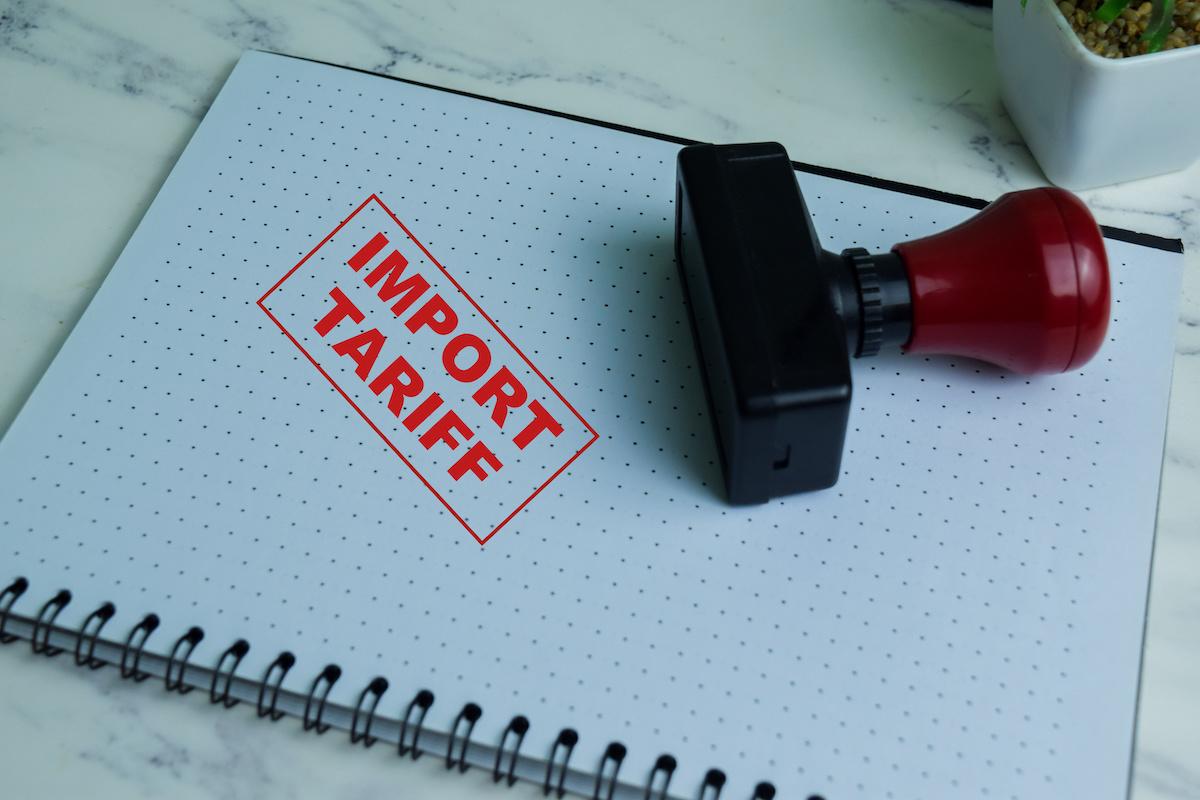 A tariff war?
A tariff war?
To recap, a tariff is a tax imposed on imported goods. It’s a mechanism that exists, in part, to help countries protect specific industries – and the jobs they create – by making similar goods and services from other countries more expensive.
The tariff is paid by whoever is doing the importing, usually businesses. But the tariff’s costs are usually passed along to the consumer because, well, businesses are in the business of making money.
If the tariff works, the consumer will change their buying habits, purchasing tariff-free products, presumably made within their country’s borders, instead of the now more expensive imported version.
In theory.
Sometimes, of course, tariffs make products cheaper than the out-of-country alternatives, but not cheaper than what the consumer had previously been paying before the tariffs were imposed. After all, the reason global free trade exists is because it’s often cheaper to produce a good or service in a different country.
Though Trump’s goal is to create more American jobs and create a stronger domestic economy that allows his government to tackle the US cost-of-living crisis without raising taxes, it remains to be seen if he’ll be successful.
But what’s almost certain is that in trying to help his voter base, through uncertainty, if not economic pain, he will destabilize our economy.
How?
Well, for starters, remember Canada is, more than anything, a trading nation. Sure, we produce a few final products, but for the most part we have the raw resources and specific skills that contribute to a larger vision that’s packaged together elsewhere. Like in the US!
In fact, the United States is by far our largest trading partner and so many jobs in our country – directly or indirectly – are related to the goods we exchange with American businesses.
A tariff on Canadian goods means what we sell to America becomes more expensive. That means Americans will be less likely to buy our products, reducing demand for what we make. With less demand, Canadian businesses will need fewer workers. That means lay-offs and unemployment sure, but it also means less government revenue and declining social services, worsening problems like the housing or addiction crisis.
But wait, there’s more!
As demand dips for Canadian products, business investment will further dry up. That, in turn, means the Canadian dollar will lose value. And since we don’t make that much stuff, what we import – buy – from, say, the United States will cost way more since our dollar has so much less value than the American dollar. This won’t just increase the cost of living, but it will also make it more expensive for companies that rely on imports to do business in Canada. That means more lay-offs and more business closures.
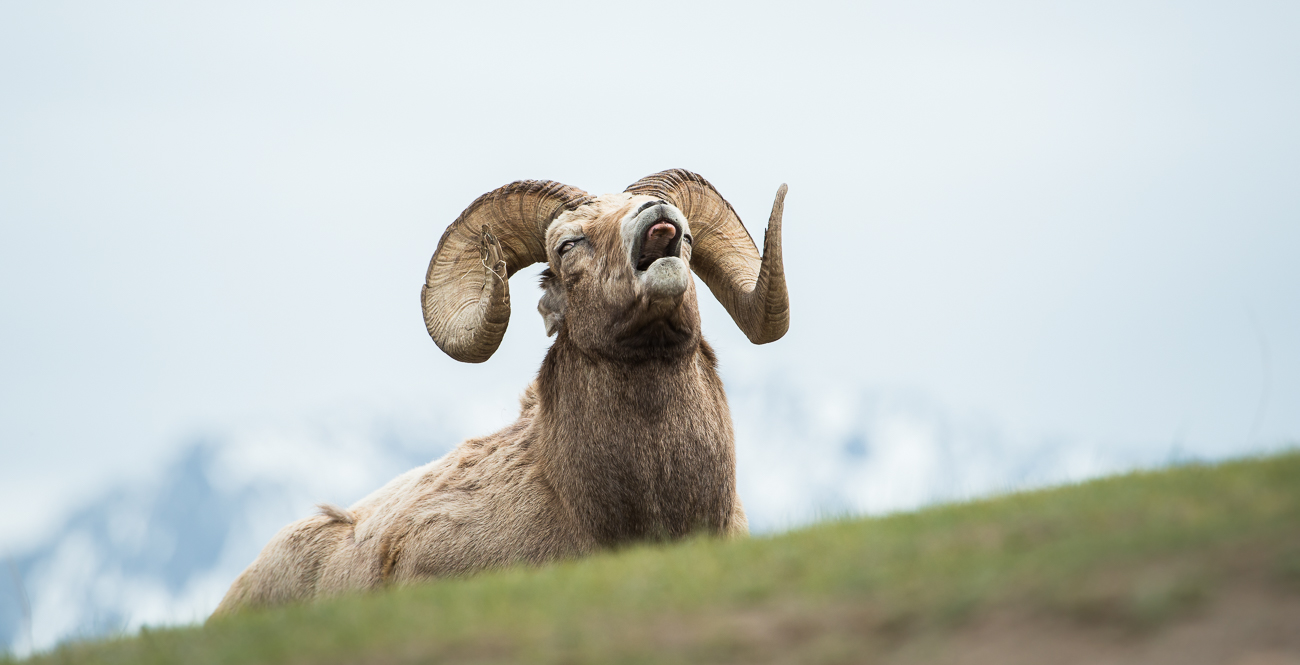 As each problem makes other problems worse, our economy will worsen, further hurting investment in Canada, further weakening the loonie, further driving inflation, further hurting prosperity…
As each problem makes other problems worse, our economy will worsen, further hurting investment in Canada, further weakening the loonie, further driving inflation, further hurting prosperity…
You get the picture. It’s not pretty.
“There are huge risks. 76/77% of our trade is with one country, the United States of America. So, if, if that market is closed for a long period of time, we’re going to have to very quickly diversify.” – Erin O’Toole
Will the American market be closed for the long term?
President Trump has demanded that Canada spend significantly more on national security, arguing, like the marten, we’ve been mooching for too long. He’s also called Canada’s border lax, even though less than 1% of all drugs entering America flow across our border.
But even if both issues are tackled to Trump’s liking, there’s every chance these are smokescreens.
It’s very possible the Trump government is using artificial emergencies to circumnavigate the checks-and-balances of the US Congress.
After all, pursuing a trade war – with Canada or other nations – allows his government to collect money for US services without raising taxes on the US people directly. And if destabilizing the global economy ultimately drives up the cost of living for Americans or costs jobs at home?
Well, he can always fudge the truth and blame other countries.
While Trump might not be in office for the long term, his political brand and supporters might stick around for a while yet. And both Trump and his supporters have made it clear that Canada has what America craves: oil, water and critical minerals. If by pulling back from free trade the US can put Canada into an economic tailspin? It’s possible Trump and his champions will be able to pursue their wish of annexing our nation, making America that more self-reliant in a destabilized world they’ve enabled.
“As a patriot, I can’t stand this 51st state taunting from the US President. So, what we have to do is not react emotionally to it. We have to stand up for ourselves, but also push back in strategic ways.” – Erin O’Toole | Former Leader of the Conservative Party
In other words, the garbage can is now sealed. We can’t bank on a free meal anymore. And we might not even be able to count on the US being a friendly neighbour. The rules have changed.
Everything is about to get that much harder.
“The United States has been our, you know, obviously our biggest trading partner and best friend in the world for a very long time, and suddenly they’re picking on us for no discernible reason. And I think a lot of people are confused by this, that this is happening, and as a result, they’re scared.” – Hamish Marshall | Pollster
“This uncertainty and this kind of sense of betrayal around the US is very sad and very frustrating, but as Canadians, we must embrace it. So, it’s a wake-up call.” – Randall Howard | Angel Investor and Entrepreneur
“We’ve got to try a lot harder and do some very hard, strategic thinking as a country about, okay, what do we have that the world wants? We have a lot that the world wants, but how are we really going to make the most of that?” – Heather Scoffield | Former Journalist and Economics Expert
“Canada needs to be more diversified, instead of just reflexively and instinctively tied at the hip with the US. We need to have Plan B, Plan C, to trade and work with other nations in this large global world.” – Randall Howard | Angel Investor and Entrepreneur
“We’re a G7 country. We’re a leader. We were in both World Wars before the Americans, because we’re willing to step up and stand up for things that we believe in.” – Erin O’Toole | Former Leader of the Conservative Party
But what do we all believe in? How and where do we want to lead? Answering these questions, while trying to overcome a cost-of-living crisis about to be made worse by a trade war, will be tough.
But these aren’t the only issue we need to grapple with…something the marten understands only too well.
It’s time to look beyond the forest. It’s time to look up. Way up.
 “Robson glacier is one of the iconic glaciers we have in Western Canada.”
“Robson glacier is one of the iconic glaciers we have in Western Canada.”
Dr. Brian Menounos is a scientist and one of the world’s leading glaciologists. Why study glaciers?
“These are important frozen reservoirs that store water and really kind of release that water in latest summer, when seasonal snow pack has been depleted, they also provide a cool buffering capacity.”
So, in other words, Robson Glacier stores water, releases it when the ecosystem requires moisture, and helps regulate the overall climate for animals like, you guessed it, the marten.
But everything isn’t swell with the Robson Glacier, as Brian explains.
“The amount of water coming off these glaciers in the decade 2010 to 2019 doubled relative to the previous decade. Our more recent research shows that in the last four years, the amount of water lost has doubled yet again.”
But, of course, that’s not all.
“These glaciers, in addition to Robson glacier, are also getting darker. A darker surface, such as the shirt I’m wearing here, if I went out into the sun, it would actually absorb more energy than if it was a bright surface. So, glaciers behave in the same way, and we can show in many cases that this darkening is due to the loss of multi-year snow high up on the glacier, and also, unfortunately, more recently, impurities delivered by wildfire activity.”
In other words, wildfires, like the one that devastated Jasper in 2024, aren’t just cultural and economic tragedies, but also environmental catastrophes on a scale most of us don’t understand.
“If you care about water, you should care about glaciers. Any way that you can either warm up the summer or cause these surfaces to become darker, you’re going to accelerate and enhance the melt of the existing snow and ice. And so, if we think about our way of life, a lot of it really hinges on hydrology.”
So, problems up here might impact us differently depending on where we live, but make no mistake: glacial changes will impact us – just as our actions impact glaciers.
How so? Check this out.
“During 2021 the summer of 2021 we had experienced a so-called heat dome. This is an atmospheric phenomena where extremely high-pressure system descends and is stationary. Those temperatures were about 10 to 12 degrees warmer than average, and for a period of five to six, seven days. On top of that, we actually had a strong convective system, so a large thunderstorm, not just one particular hazard, but a whole compounding nature to cause this cascade of effects such as widespread flooding, channel erosion and the need to evacuate people from the park itself.”
Brian now answers your inevitable question.
“It becomes a little bit more complex for compounded events, but it is safe to say that the heat dome really setting the stage for this particular event was caused by human induced climate change. There has been some speculation that the intensity of convection was enhanced by wildfires that were occurring to the south of Mount Robson. Pyro cumulonimbus is a phenomena where a wildfire can start to generate its own weather and also have severe convective activity associated with that.”
In other words, like the economic issues we’ve already discussed, the environmental challenges we face are multi-faceted and compounding. Though we often point to one big fire or one big flood and say this is the problem with climate change, the reality is the fires and floods are actually the consequence of hundreds of smaller problems we’ve overlooked or decided to ignore. And we can’t ignore the climate anymore. After all, climate change isn’t just a threat to martens, but also an issue that threatens to dramatically worsen our cost-of-living crisis, driving up the cost of housing and cars and food.
Which brings us to this point:
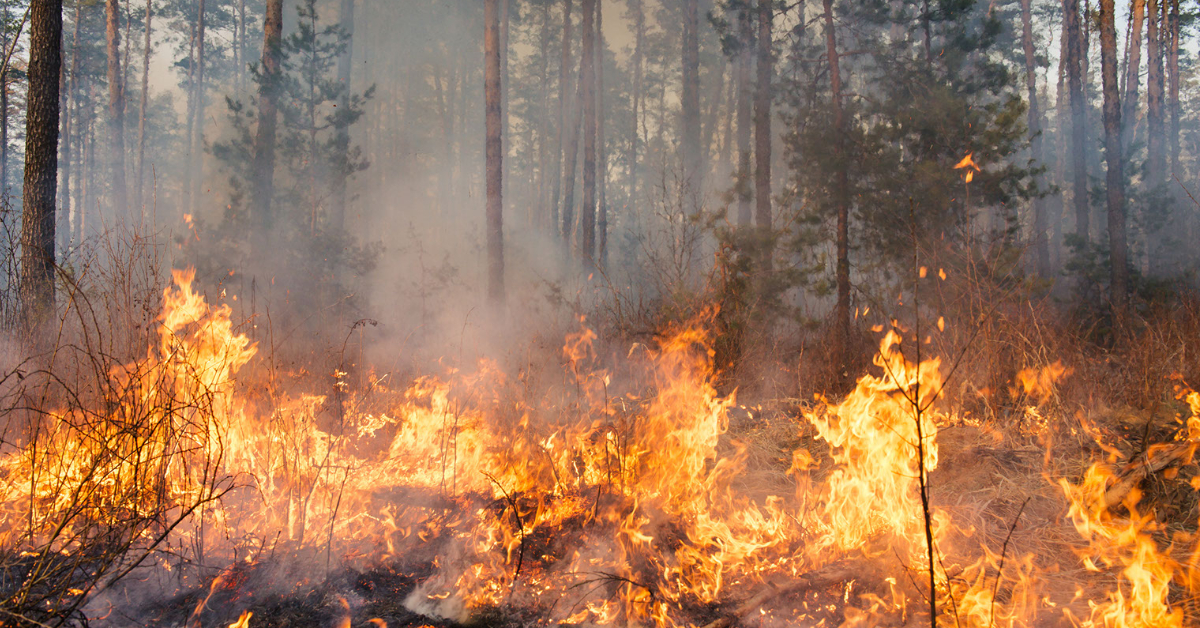 “The planet is going to be fine. The actual environmental conditions on the planet are changing. So, there will be winners and losers, and humans might be the losers.”
“The planet is going to be fine. The actual environmental conditions on the planet are changing. So, there will be winners and losers, and humans might be the losers.”
And Dr. Kate Moran should know. In addition to being an educator and ocean engineer, Kate has also advised the White House on science and climate policy.
“It was a time in the United States where there was incredible respect for scientific knowledge. I mean the executive branch of the White House and also Congress, understood the importance of science, not just for solving problems, but also that by investing in science and research and knowledge, you grow the economy, that it is the foundational piece that has made the US one of the most innovative countries that have ever existed.”
But America, as you might have heard, is turning away from science.
“When they pull back, it’s going to be a big gap, like we have to defend the science that we do. We have to grow it. We have to fill those gaps. I see the international science community as being the most important diplomats on the planet right now.”
Kate argues that this is a major opportunity for Canada.
“We may be able to step in and fill that gap. We certainly can’t do it for long term. Canada has 10% of the GDP of the US, but I see it as an opportunity. We’re just going to turn it up do more science.”
But what if this is a long-term problem? What if America not only stops researching the climate, but also stops sharing the data it has at the ready? Dr. Brian Menounos offers one possible consequence.
“I would say that any time that countries aren’t sharing observational data, it’s unfortunate. In a way that listeners may think about when they pull out their smartphone and they look to check what the weather is. A lot of those current conditions, those are also ingested into a model for how the weather is going to be the next day. And science proceeds by having free and open access to data sets, and whether one was in a trade war, whether one was dealing with conflicts, I will say as a scientist that it is critically important to have open and accessible data which ultimately helps not only decision makers, but also the general public.”
Could this be a big issue?
That impacts our understanding of what’s happening to glaciers, to hydrology, to the climate and to so many facets of our environment, but as Dr. Kate Moran explains, it also means:
“The monitoring in the ocean really important for climate change, but clearly for weather, forecasting is an economic hit. If you do not have that, you’re going to destroy industries, you’re going to destroy communities, it’s going to be a huge economic hit by shutting down that information.”
That’s an issue – it’s potentially another layer of economic uncertainty, potentially another problem demanding an answer.
“And that has implications. It has implications on economic growth.”
Dr. Brian Menounos is right. These unforeseen curveballs are making the problems we face – the lives we live – harder and harder. And how much worse might the climate problem become? Dr. Kate Moran says:
“I tend not to go to the dire part, and that is because we’re an incredible species in terms of our responsiveness. Right now, we’re acting stupid. We know climate change is happening. We know the solution, and we have not learned how to alter the behavioral response collectively to actually do those things.”
And we need to, according to former prime minister Kim Campbell.
“Do we think we’re going to keep global stability? And peace?” It’s a national security issue. If we’re the ones whose economies have contributed the most to (the problem), how collaborative are they (other countries) going to be with us? And how friendly are they going to be with us?”
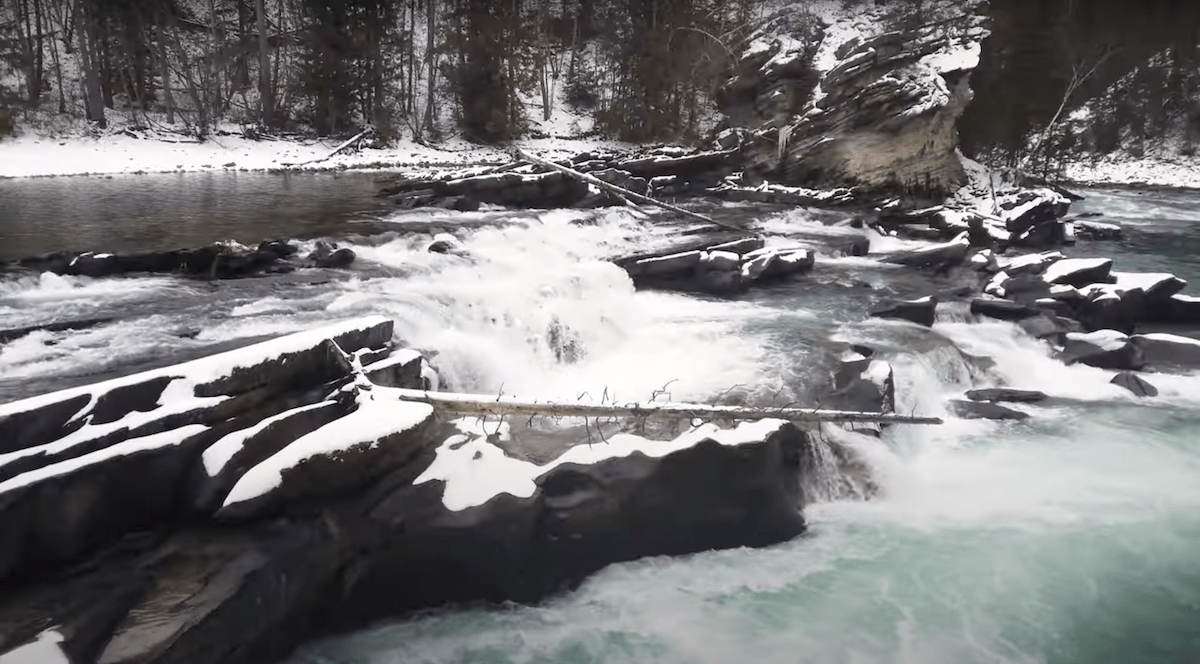 In other words, our security problems might get much, much worse without addressing the climate issue as well. But so too might other environmental issues.
In other words, our security problems might get much, much worse without addressing the climate issue as well. But so too might other environmental issues.
Other environmental problems?
“I lament that it has become so much about climate change, I would almost argue the policy that underlies almost every other policy, our land and water and air, is what produces everything that we have.”
Former federal Conservative cabinet minister Monte Solberg is absolutely right. Why? Because the environment is much bigger than just climate change.
Why? Because a changing climate is just one factor, along with habitat loss, pollution, the exploitation of wildlife and invasive species, that is causing the rapid decline of biological diversity.
Biodiversity?
“Simply put, it’s the variety of life on Earth.”
David Cooper has helped oversee the Convention on Biological Diversity – a United Nations body that works to coordinate global efforts to protect biodiversity.
“Life on earth in the broadest sense depends on biodiversity and the ecosystems that biodiversity makes up.”
And as David adds, “The bad news is that in most parts of the world it is declining and it’s declining at all levels.”
Here’s the issue:
Scientists have analyzed Earth’s record keeping system – fossils – to understand how often natural selection creates natural die-out, what’s known as the Background Extinction Rate. Their answer? One species goes extinct per million species years, or approximately between one and five species per year in a world with a million species.
What is our current extinction rate?
Well, depending on who you believe, it’s between 1,000 and 10,000 times higher than the planet’s Background Extinction Rate – the ‘natural’ natural selection, if you will.
Which is a big spread, but at either extreme, it’s still bad news.
Consider this:
For species that disappeared during the last century, their loss should have taken 800-to-10,000 years to occur. Not the 100 years it actually took. And that’s according to a study that used a “conservative background rate of two extinctions per million species-years.”
But, again, our very best-case extinction rate scenario isn’t double the Background Extinction Rate, it’s 1000 times the extinction rate.
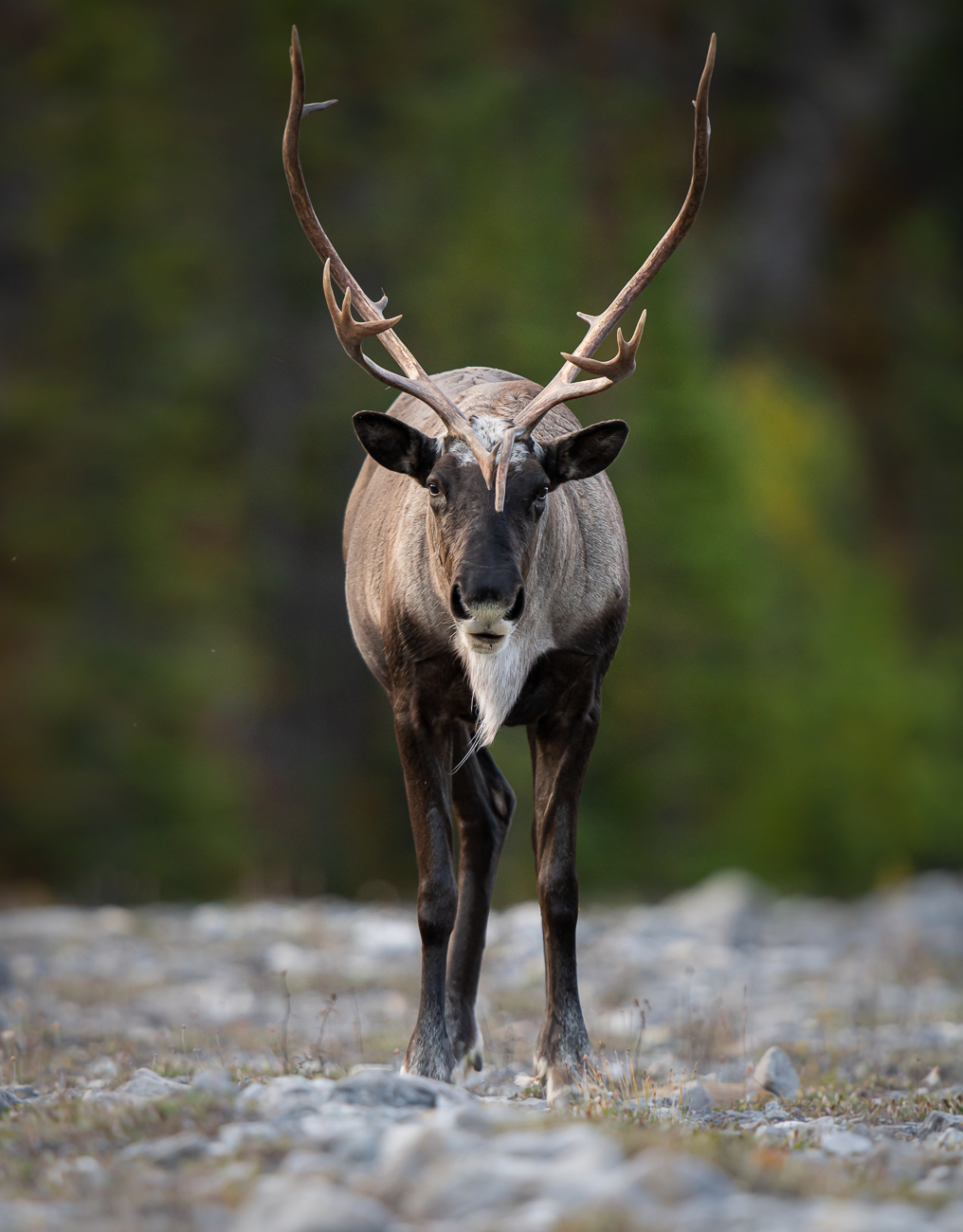 And that’s probably why almost half of every monitored species is either decreasing in population or range or both. In fact, the Living Planet Index reports a catastrophic 73% drop in the average global wildlife population from 1970 to 2020.
And that’s probably why almost half of every monitored species is either decreasing in population or range or both. In fact, the Living Planet Index reports a catastrophic 73% drop in the average global wildlife population from 1970 to 2020.
Is this a Canadian problem you ask? Yes!
Of the 50,500 species we monitor, the federal government says 1 in 5 are facing some risk of extirpation and over 2,000 are at high risk of national disappearance. More than 500 species are legally listed as at risk by the federal government, including the iconic Snowy Owl, which has seen a 42.6% decline over 24 years.
For all these reasons, many scientists believe we’re entering a period of mass extinction – where up to three-quarters of species may disappear over a few million years. There have been five such events, with the most famous, of course, being the one that whacked the dinosaurs.
If we’re entering a sixth mass extinction, unlike past extinction events, this one is human-caused, scientists tell us. But that is, of course, a debate and, frankly, not a particularly helpful one.
Why?
Because the why distracts from the real issue: Un-natural natural selection at a rate well above the Background Extinction Rate means only one thing: Biodiversity loss.
“The Earth is the context for all life, including us. That’s where the atmosphere is, that’s where the weather we have comes from. That’s where the water we drink and the food we eat comes from. Inside that is the human dimension – our species, which shares the world with many. And then inside human society is our social values and our economy. Those are nested inside what it is to be human, which is nested inside the world. And the idea of elevating the economy or human preferences for use above that context, is why we have an environmental crisis in the 21st Century.”
In other words, while we can change our trade partners, build more homes, fund a military to defend our nation, and mitigate the impacts of climate change, we can’t withstand the loss of biodiversity.
“We’re all part of this web of life on earth. The more connections there are, the more stable the whole system is. As we start to lose certain pieces, then now instead of a being web, it becomes a line, or a chain, and then suddenly that system is really vulnerable to any change that might happen.”
Biologist Dr. Victoria Lukasik is right and, as you now understand, change is happening, fast, and on oh so many fronts. Which doesn’t bode well. Even still.
“The environment has often been described as a full stomach issue. People have to have full stomachs before they start caring for the environment. And you can see that in many parts of the world, where if there’s terrible poverty and suffering, then people have very little interest in environmental policy.”
Sam Sullivan is the former mayor of Vancouver and a political conservative. But above all else? Sam’s a realist, argues pollster Shachi Kurl.
“These decisions are very much rooted in a matrix that starts with your home economics. Can I afford my rent? Can I afford to feed my children? Am I worried about having a job next year? It’s a much tougher sell. So, I would agree with Sam on that front.”
In other words, the present shouts and the future whispers.
“I think it is abstract to us until it happens to us.”
Barbara Cartwright is the CEO of Humane Canada and she believes extinction – biodiversity loss – is hard to comprehend. Consider the extinction of the western black rhinoceros.
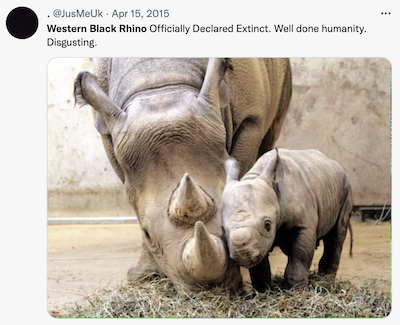 “Everybody was writing on social media about how terrible it was that this last rhino had died, but people have been sounding the bells for decades that that was exactly what was going to happen and we just kept letting it happen. But then everybody – the average person – seems to get on board with this (grief). I’m not questioning that they were really feeling grief about it…but they never stood up to make it stop.”
“Everybody was writing on social media about how terrible it was that this last rhino had died, but people have been sounding the bells for decades that that was exactly what was going to happen and we just kept letting it happen. But then everybody – the average person – seems to get on board with this (grief). I’m not questioning that they were really feeling grief about it…but they never stood up to make it stop.”
Why did we do nothing?
“One of the things that I’ve seen happen that’s very interesting is that people will get very deeply moved by extinction. (Then) they start to get into it and they start to realize just how big the problem is and they literally shut down. They can’t seem to take in the enormity of the multiple ways that animals are suffering in our world and then they turn away”, Barbara says. “But then the one rhino dies and it’s sad. You know what I mean? It’s something they can hold on to without having to feel like they have to take on the entire world, which seems structured against animals.”
Barbara has spent most of her life trying to get people to care for animals and she believes we run the real risk of losing our most threatened species because “whether it’s extinction, whether it’s cruelty, we don’t stand up to make it stop. We don’t vote on this issue. People don’t go to the polls on it, so government doesn’t have to make it change.”
Barbara passionately believes we need to solve our environmental problems before they get worse than they already are, but she adds “the enormity of the issues facing the environment – where we live, our world, our home – is monstrous. It’s so much easier to watch Netflix.”
Shachi Kurl agrees:
“If a consumer market, for example, made it very easy to take action on issues of understanding, respecting, preserving, enhancing nature, I think we’d be taking them.”
So, that’s an issue. In fact, everything we’ve discussed here is an issue – they’re all serious, complex, compounding, interwoven problems at what’s known as a systems level.
“The important thing is, the numbers are the numbers. The data is the data. You may hate the data. The data may depress the hell out of you based on your own perspective or your bias. The data may just make you want to cry, but it is what it is.”
Indeed, Shachi Kurl.
So now that we have the facts, the question becomes can we actually grow our economy and safeguard our sovereignty in a complex, fast-changing, dangerous world, while also addressing other challenges, like climate change and biodiversity, that didn’t just disappear with Trump’s trade war or the release of Chat GPT5?
“I mean, that’s ambitious. I think we should try.” – Hamish Marshall | Pollster
We should always try.
“No one knows what the future is. We know what the trends are, but nobody actually knows what the future is.
So even if objectively judged, let’s say, on the climate, we’ve baked in so much climate change that no matter what we do, we’re going to have problems.
Yes, that’s true, but all the problems are forecasts. What if we did everything we could? Maybe it works out a little better than we thought, but doing nothing guarantees the bad outcome you don’t want. Doing something gives you the chance of an outcome you want.
And that’s all human affairs have ever been. Even when we were wandering around the savannah trying not to get eaten. People didn’t just say, oh god, there’s lions out there, I give up. They kept going, and they found a way to protect their families and to move ahead.
There are lions out there right now. So don’t give up. Keep going. That’s, that’s the essence of the human condition – keep going.” – Harvey Locke | Global Biodiversity Advisor
Exactly. And, look, I know these problems seem overwhelming.
“It’s complex. Our brains don’t like change. They like things to be predictable. And there’s a lot going on. And I think we’re all feeling it. We’re feeling like we can’t keep up, that things are changing very quickly, but also a whole bunch of things are changing at the same time.” – Ilona Dougherty | Youth Expert
“I think the feeling for a lot of Canadians is that the world doesn’t make sense anymore.” – Hamish Marshall | Pollster
“We’re all kind of sitting here worried and scared, and so if we could just take that first step, look at that person across the aisle, be curious about what’s going on in their life and ask them a question. That’s all we need to do.”
Exactly.
“No one is going to be able to come up with a perfect solution in the beginning. What we hope is that you’re going to push things forward a little bit down the road, until they become the status quo and we can really make some big change. Sometimes history looks like that – and then all of a sudden, there’s a fundamental seed change. We’ve seen this on a range of stuff with human rights around the world. There’s a different type of urgency with the environment.” – Salimah Ebrahim | Journalist and Entrepreneur
And we do need to act with a sense of urgency, and not just for the environment, but for each other. But in the doing, we need to work across systems – and with different skillsets – to learn, think, create and simply do better.
“We need a solution that’s going to work in the context of a trade war, but also one that helps solve climate change. One that’s going to work in a mental health crisis and also be a valuable economic solution. We need to be observant – which young people are. We need to be connecting the dots – which young people are more capable of doing. But again, they’re more willing to experiment, more willing to get outside the box, try new things that have never been tried before. And in a context of multiple crises, that’s what we need.” – Ilona Dougherty | Youth Expert
But to succeed? We can’t forget this:
“We’re in better shape than most places in the world for a number of reasons, some to our credit, but some are just a matter of dumb luck.” – Peter Biro | Lawyer and Democracy Expert
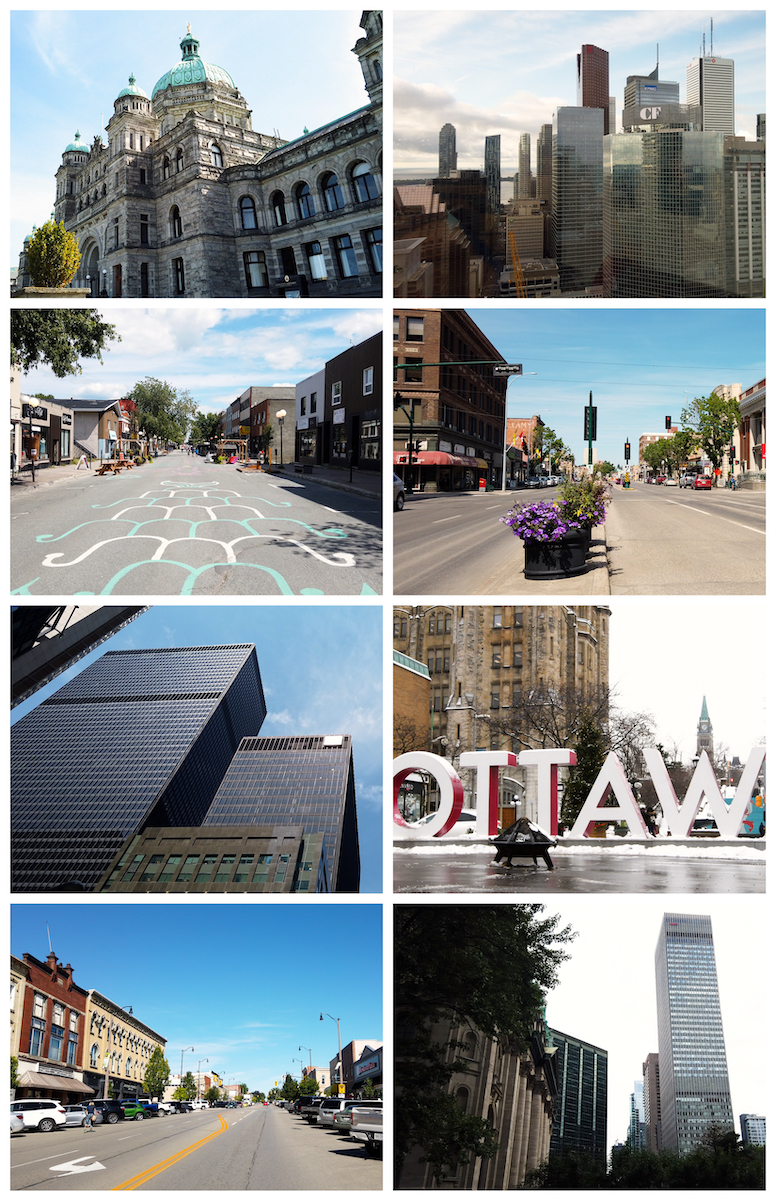 “Canada is the best country in the world. We are a massive geography. We’re diverse. We’ve got historic challenges that we’re still trying to remediate and to build and learn from. It’s not an easy mix. By Gosh, it’s worth fighting for. Students watching this – you’re inheriting the greatest country in the world, but with a few challenges we’re leaving you. So hopefully tackle them with passion and with a sense of purpose.” – Erin O’Toole | Former Leader of the Conservative Party
“Canada is the best country in the world. We are a massive geography. We’re diverse. We’ve got historic challenges that we’re still trying to remediate and to build and learn from. It’s not an easy mix. By Gosh, it’s worth fighting for. Students watching this – you’re inheriting the greatest country in the world, but with a few challenges we’re leaving you. So hopefully tackle them with passion and with a sense of purpose.” – Erin O’Toole | Former Leader of the Conservative Party
And if I may, that purpose requires a bit of empathy and a willingness to dig deeper and go further. After all, finding solutions is the easy part. Creating solutions that can unite and endure? That’s a much taller task.
“What I have come to really appreciate is the importance of creating and protecting the conditions in which we, in society, can move forward and attack really difficult problems together. The problems, especially the big problems that are arising, are increasing in number and complexity at an exponentially faster rate than our ability and competence and capacity to solve it. That only compounds a problem that we’ve always had in a free and democratic societies, and that is the problem of generating consensus around A) What the problems are; the big ones that we should care about together, and B) How to solve them?” – Peter Biro | Lawyer and Democracy Expert
What do you think?
Terms & Concepts
Referenced Resources
* Quotes have been edited for brevity and clarity.